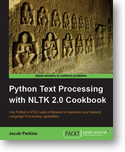I still remember the cover of Hot Rod magazine that announced (from memory) “The 6’s are here!” Don “The Snake” Prudhomme had broken the 200 mph barrier in a drag race. Other memories follow on from that one but I mention it to explain my interest in a recent Subject Authority Cooperative Program decision to not have a cross-reference from dragster (the term I would have used) to more recent terms, drag cars or drag racing cars.
The expected search (in this order) due to this decision is:
Cars (Automobiles) -> redirect to Automobiles -> Automobiles -> narrower term -> Automobiles, racing -> narrower term -> Dragsters
Adam L. Schiff, proposer of drag cars & drag racing cars says below “This just is not likely to happen.”
Question: Is there a relationship between users “work[ing] their way up and down hierarchies” and display of relationships methods? Who chooses which items will be the starting point to lead to other items? How do you integrate a keyword search into such a system?
Question: And what of the full phrase/sentence AI systems where keywords work less well? How does that work with relationship display systems?
Question: I wonder if the relationship display methods are closer to the up and down hierarchies, but with less guidance?
Adam’s Dragster proposal post in full:
Dragsters
Automobiles has a UF Cars (Automobiles). Since the UF already exists on the basic heading, it is not necessary to add it to Dragsters. The proposal was not approved.
Our proposal was to add two additional cross-references to Dragsters: Drag cars, and Drag racing cars. While I understand, in principle, the reasoning behind the rejection of these additional references, I do not see how it serves users. A user coming to a catalog to search for the subject “Drag cars” will now get nothing, no redirection to the established heading. I don’t see how the presence of a reference from Cars (Automobiles) to Automobiles helps any user who starts a search with “Drag cars”. Only if they begin their search with Cars would they get led to Automobiles, and then only if they pursue narrower terms under that heading would they find Automobiles, Racing, which they would then have to follow further down to Dragsters. This just is not likely to happen. Instead they will probably start with a keyword search on “Drag cars” and find nothing, or if lucky, find one or two resources and think they have it all. And if they are astute enough to look at the subject headings on one of the records and see “Dragsters”, perhaps they will then redo their search.
Since the proposed cross-refs do not begin with the word Cars, I do not at all see how a decision like this is in the service of users of our catalogs. I think that LCSH rules for references were developed when it was expected that users would consult the big red books and work their way up and down hierarchies. While some online systems do provide for such navigation, it is doubtful that many users take this approach. Keyword searching is predominant in our catalogs and on the Web. Providing as many cross-refs to established headings as we can would be desirable. If the worry is that the printed red books will grow to too many volumes if we add more variant forms that weren’t made in the card environment, then perhaps there needs to be a way to include some references in authority records but mark them as not suitable for printing in printed products.
PS: According to ODLIS: Online Dictionary for Library and Information Science by Joan M. Reitz, UF, has the following definition:
used for (UF)
A phrase indicating a term (or terms) synonymous with an authorized subject heading or descriptor, not used in cataloging or indexing to avoid scatter. In a subject headings list or thesaurus of controlled vocabulary, synonyms are given immediately following the official heading. In the alphabetical list of indexing terms, they are included as lead-in vocabulary followed by a see or USE cross-reference directing the user to the correct heading. See also: syndetic structure.
I did not attempt to reproduce the extremely rich cross-linking in this entry but commend the entire resource to your attention, particularly if you are a library science student.
